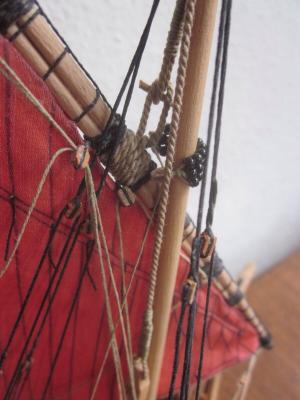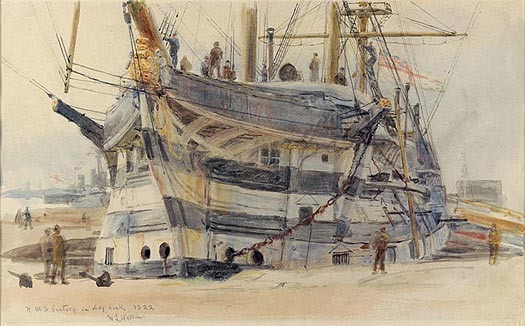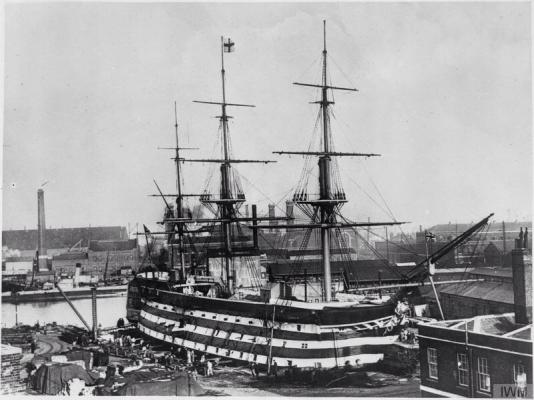-
Posts
3,441 -
Joined
-
Last visited
Content Type
Profiles
Forums
Gallery
Events
Everything posted by amateur
-
OK, two half wheels that arde not really to become wheels (how inattentive of me: they never could be: they have a square hole in the middle ) second guess: something to prevent a running heavy cable to do any harm? Jan
-

British 'Termagant', 1780, ship-rigged Sloop - Info?
amateur replied to malachy's topic in Nautical/Naval History
Can you give the link to this chapman personal collection (I have the ANM-link, but the other would be very nice also...) Jan -
My guess would be that the planking will hold it all together, besides: there is no paper between the keel and the frames. Jan
- 191 replies
-
- young america
- clipper
-
(and 1 more)
Tagged with:
-
Afterwards, you can plank this half-hull, and it will certainly be a very decorative piece on the wall of your workshop Jan
- 102 replies
-

Need help with rigging on the French Chebec Indiscreet.
amateur replied to DougM's topic in Masting, rigging and sails
This is the parrel set-up of a ship build by a guy on a dutch forum. He knows quite a lot on these mediterranean ships, si I'm inclined to say that this is correct: a simple parrel, with the running part through a dpliced eye on the other end. no blocks at all. Jan -

Need help with rigging on the French Chebec Indiscreet.
amateur replied to DougM's topic in Masting, rigging and sails
I suggest that you rename uour post: something like Question on rigging a chebec That will attract more attention than a rather vague "need help" I van't answer your question: i have no knowledge of these ships. Btw: the model looks quite well build. Jan -

endeavour shrouds & ratlines (moved by admin)
amateur replied to geoff's topic in Masting, rigging and sails
In your profile is a notification-option: notify mewhen someone replies on a topic i follow. (Either by notification, or by email). As you follow this topic, that option would be my first suspect for the mails. Jan -
I thought the marines and the guncrews where strictly separated groups? You show them as a part of the guncrew, but who is manning the tops during battle when the marines are running out and aiming the great guns? Jan
-
Hi mmdd, Is that one model, or two? The lower pic has the remains of a sun-tent, the upper ones have not. Or is it a before-after of acrestoration? Jan
- 2,625 replies
-
- kaiser wilhelm der grosse
- passenger steamer
-
(and 1 more)
Tagged with:
-
Some watercolours suggest that they took the black-white striping to the limit.... (This one is labelled victory in drydock, 1922) Jan
-
You're not just doing the outside, arent't you? We would like to see the interior as well Jan
-
Undoubtedly to something beautifull, and to som emore destruction along the route. Perhaps a Vic in the situation of 1890, or one in the situation of 2025? Jan
-

ROYAL CAROLINE 1749 by Doris - 1:40 - CARD
amateur replied to DORIS's topic in - Build logs for subjects built 1501 - 1750
We've run out of superlatives. We should think of a new one that realy captures your skills and results! Caroline has become a real stunner. It's a pity we can't see her real life, would love to.... Jan- 883 replies
-
- royal caroline
- ship of the line
-
(and 1 more)
Tagged with:
-

Gripen 1591 by NAZGÛL (Matti)
amateur replied to NAZGÛL's topic in - Build logs for subjects built 1501 - 1750
And www.dewillembarentsz.nl (also dutch only....) -

Gripen 1591 by NAZGÛL (Matti)
amateur replied to NAZGÛL's topic in - Build logs for subjects built 1501 - 1750
You know the site vocsite.nl? It is onlu in dutch, but informative for those who are able to read Dutch. Jan -
Guess you have to share ths title with Martanek, (very well known from some absolutely ridiculously detailed paper models in MSW1. A shame he dropped out after the crash. Jan
-
I would say: write whatever you like, and when you like. I already learned something from your picture: Fitz was way larger than I ever imagined. These is a guy (andy) somewhere around on MSW (inless he is soemwhere sailing on the grate lakes) who alos did quite a lot of talking on these ships, doing at the moment a slightly larger scale model of a smaller laker. I like these ships (don't ask me why) so I will follow this one. Jan
- 40 replies
-
- edmund fitzgerald
- iron shipwrights
-
(and 1 more)
Tagged with:
-
Hi Daniel, We're absoluterly not surprised. Only a bit curious how and were your carefully applied coppering came loose, and whether or not the remainder feels itself out of palace as soon as the revised version is applied. Wouldn't surprise me if that also jumps of the hull, as soon as they realize how version 1.0 they actually are Jan
-
And the hole in the middle of the bulkhead is to help allignment, or...? Jan
- 191 replies
-
- young america
- clipper
-
(and 1 more)
Tagged with:
About us
Modelshipworld - Advancing Ship Modeling through Research
SSL Secured
Your security is important for us so this Website is SSL-Secured
NRG Mailing Address
Nautical Research Guild
237 South Lincoln Street
Westmont IL, 60559-1917
Model Ship World ® and the MSW logo are Registered Trademarks, and belong to the Nautical Research Guild (United States Patent and Trademark Office: No. 6,929,264 & No. 6,929,274, registered Dec. 20, 2022)
Helpful Links
About the NRG
If you enjoy building ship models that are historically accurate as well as beautiful, then The Nautical Research Guild (NRG) is just right for you.
The Guild is a non-profit educational organization whose mission is to “Advance Ship Modeling Through Research”. We provide support to our members in their efforts to raise the quality of their model ships.
The Nautical Research Guild has published our world-renowned quarterly magazine, The Nautical Research Journal, since 1955. The pages of the Journal are full of articles by accomplished ship modelers who show you how they create those exquisite details on their models, and by maritime historians who show you the correct details to build. The Journal is available in both print and digital editions. Go to the NRG web site (www.thenrg.org) to download a complimentary digital copy of the Journal. The NRG also publishes plan sets, books and compilations of back issues of the Journal and the former Ships in Scale and Model Ship Builder magazines.





